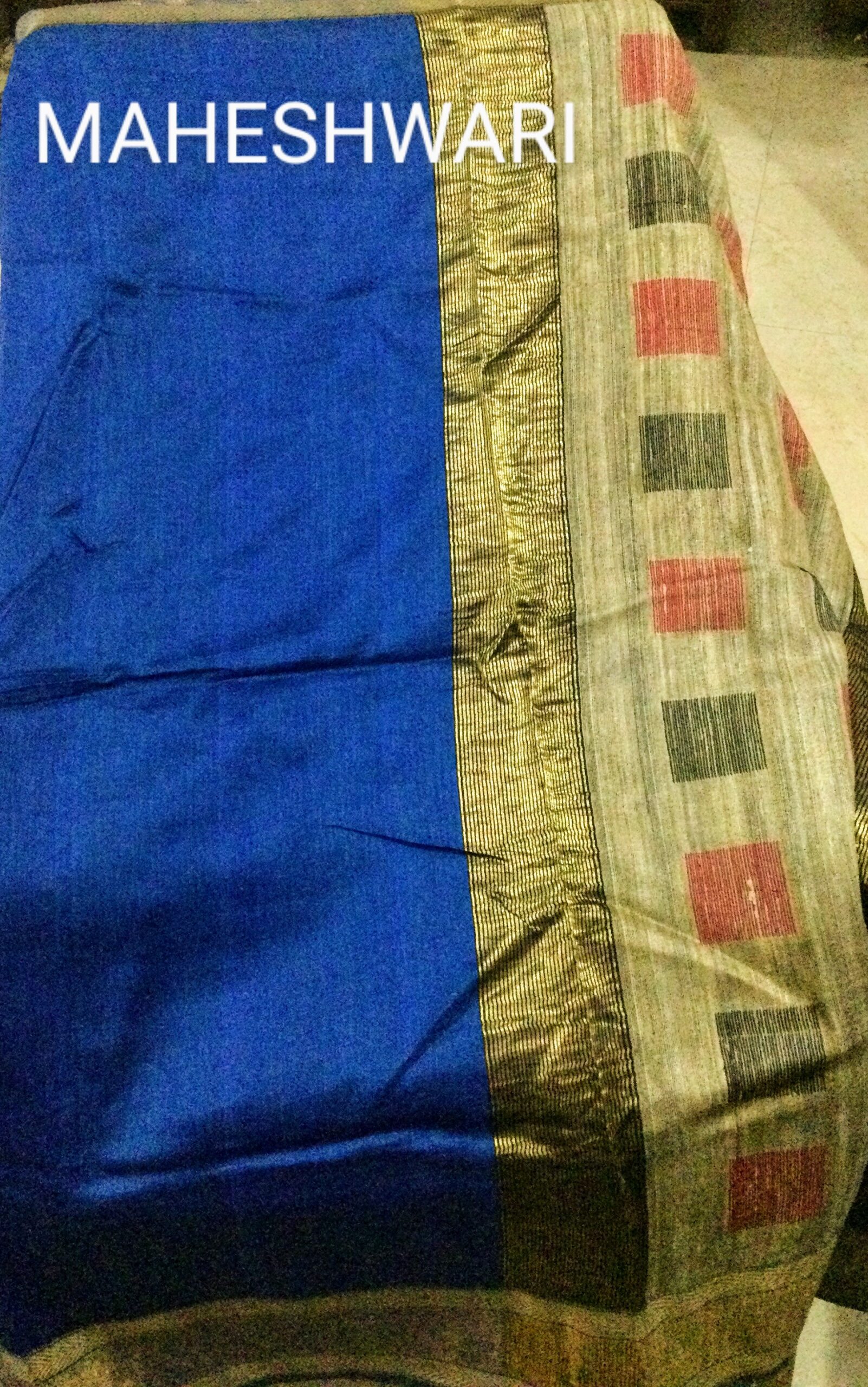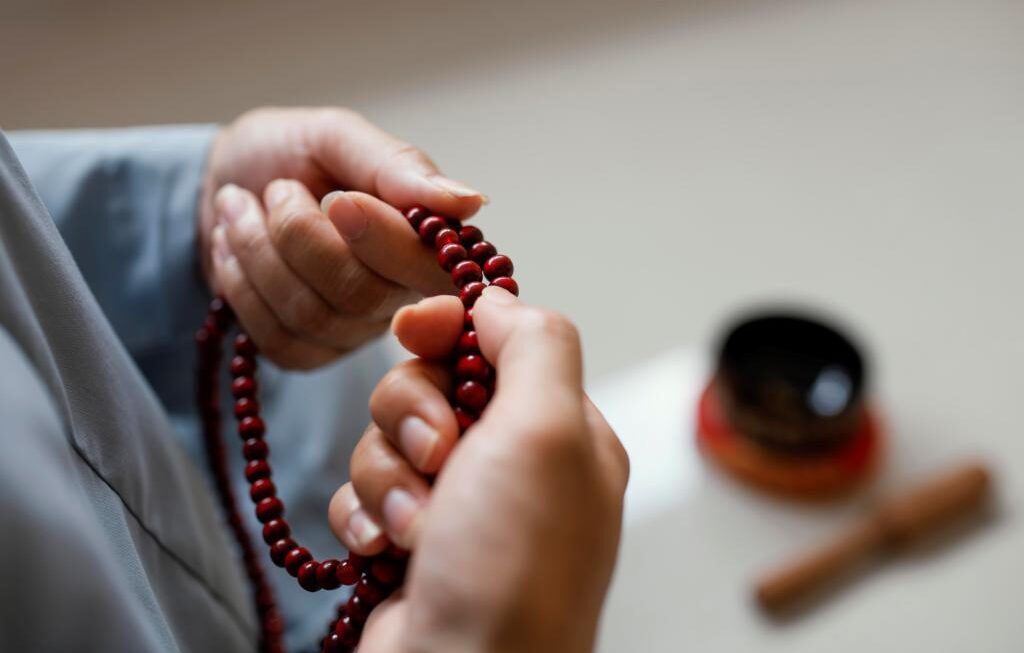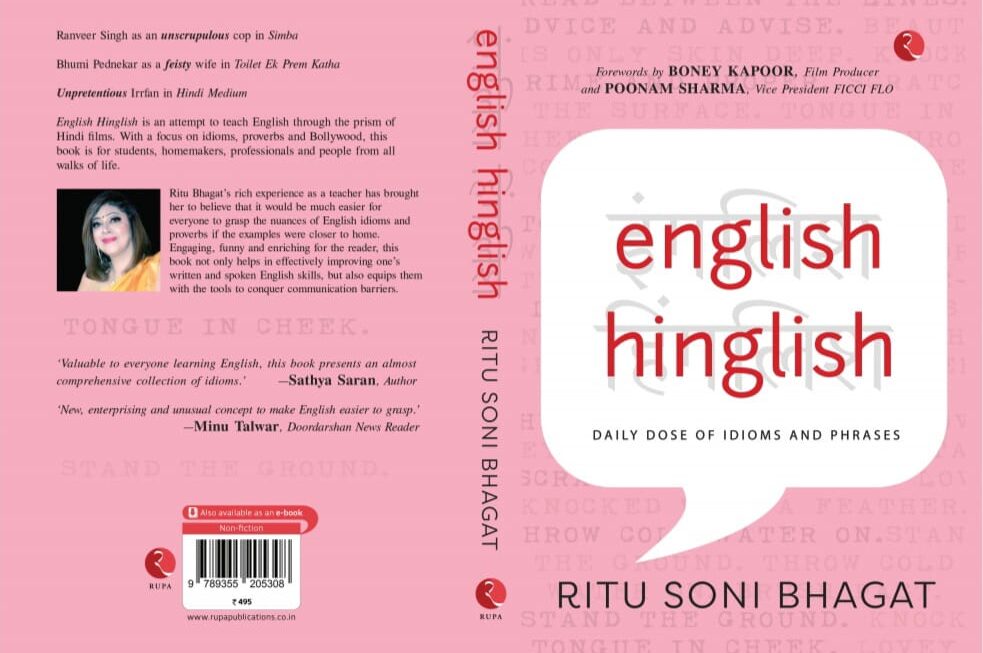The quintessential saree has remained one of the most favourite canvasses for Indian weavers. Craftsmen from all over the country have found unadulterated freedom of expression in these 6 yards of fabric, and perhaps this is why India is home to some of the finest handloom fabric traditions since time immemorial.
Sarees have survived thousands of years of modifications, migration, and globalization. Most women have adopted other outfits too but sarees remain an integral part of our culture and traditional attire worn with elegance. Saree is sensuous versatile glamorous and can be styled in many drapes and paired with different blouses and accessories. It can be appropriately worn for almost every event, office wear, daily use, or festival. In the last couple of months, I dwelt on the saris of the East and South Now it is time for the wrap-up with the stellar silks of the West and North.
The west of India is home to numerous weaves that have held their own for centuries. Artisans have developed their unique styles starting from the yarn to the final product. Many of these are endangered today but, these sarees continue to be loved for their exclusive work and distinct style. Some take months or even years to finish. The effort time and skill that goes into making these masterpieces makes them precious enough to become family heirlooms.
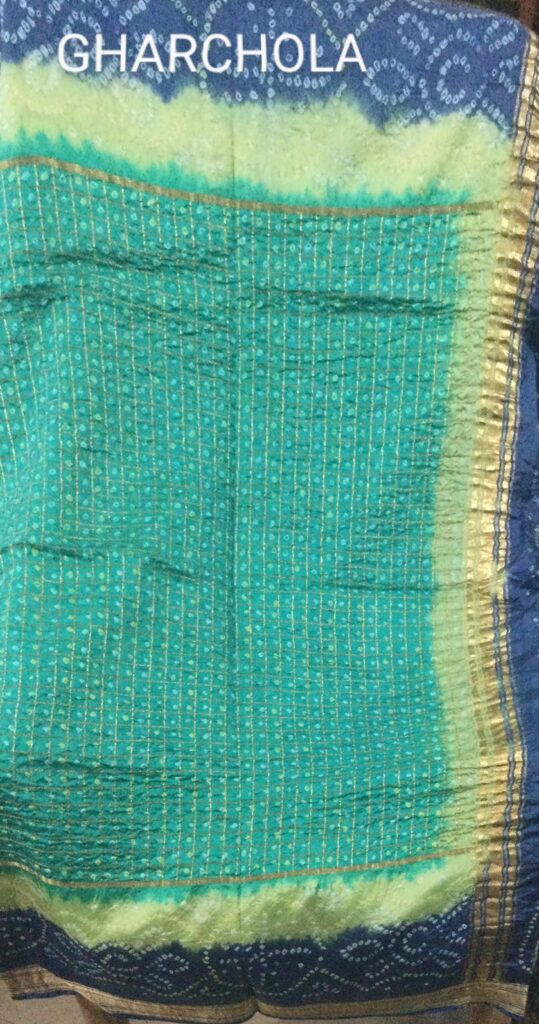
Paithani handloom sarees, a symbol of Maharashtrian culture, the ‘Queen of Silks’ is woven silk with a rich zari border made from gold or silver thread, takes up to 6 months to weave; once upon a time used to clothe the royals. Today, this craft is struggling to survive since power looms produce copies extremely close to the real thing. If you plan to buy a Paithani handloom saree, don’t be fooled by the fakes. Let me give you an idea of the difference. The reverse side of a genuine Paithani handloom saree looks the same as the top. A fake Paithani, on the reverse, would reveal itself in the mesh of thread. No two handwoven Paithani sarees can look the same, unlike mass-produced ones. The threads are naturally dyed, usually available in basic colours. The saris because of the quality need TLC.
Bandhani sarees are the face of Gujarati and Rajasthani craft. Bandh means “to tie”. This is a traditional technique of tie and dye in which the cloth is plucked with fingernails and tied into small or large dye resist circles depending on the pattern that is desired. Several colour combinations are readily available in cotton, silk, and chiffon.
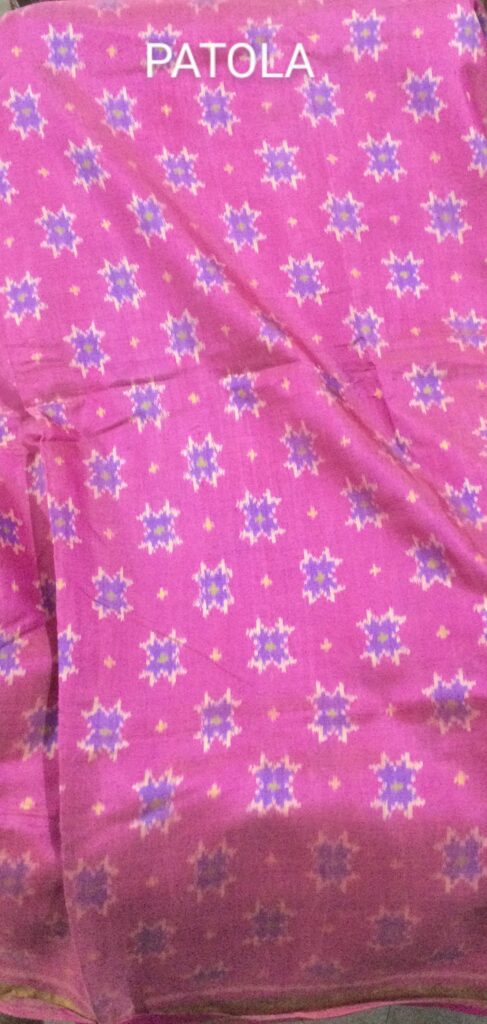
The pride of Gujarat, the Patola saree is a double ikat weave that originated in the town of Patan in Gujarat. The yarn is dyed as per the demands of the design. The intricate warp and weft geometric or abstract design is laid out by the master craftsman very carefully, for one wrong thread may spoil the pattern. A rosewood sword-shaped stick called Vi is used to adjust the yarns. Because of the unique technique, Patola sarees are reversible and look the same on both sides. Often, even the weaver cannot tell the difference.
In the 12th century, the weavers got the patronage of the Solanki Rajputs, the rulers of Gujarat, and parts of Rajasthan then. Patola silks were so popular that even after the decline of the Solanki Empire, it was a sign of social status amongst Gujarati women. The colors used are vibrant, taken from nature. The motifs too, have been adapted from choices of various religious communities, another beautiful example of unity in diversity.
A traditional form of tie and dye from Rajasthan and Gujarat, the term leheriya is derived from “leher” meaning waves. Done on thin silk and cotton sarees, these are rolled from one corner to another, tied at regular intervals before being dyed to create complex wave-like patterns. Traditional leheriya uses natural dyes like indigo and alizarin though today, these are available in a wide range of colours.
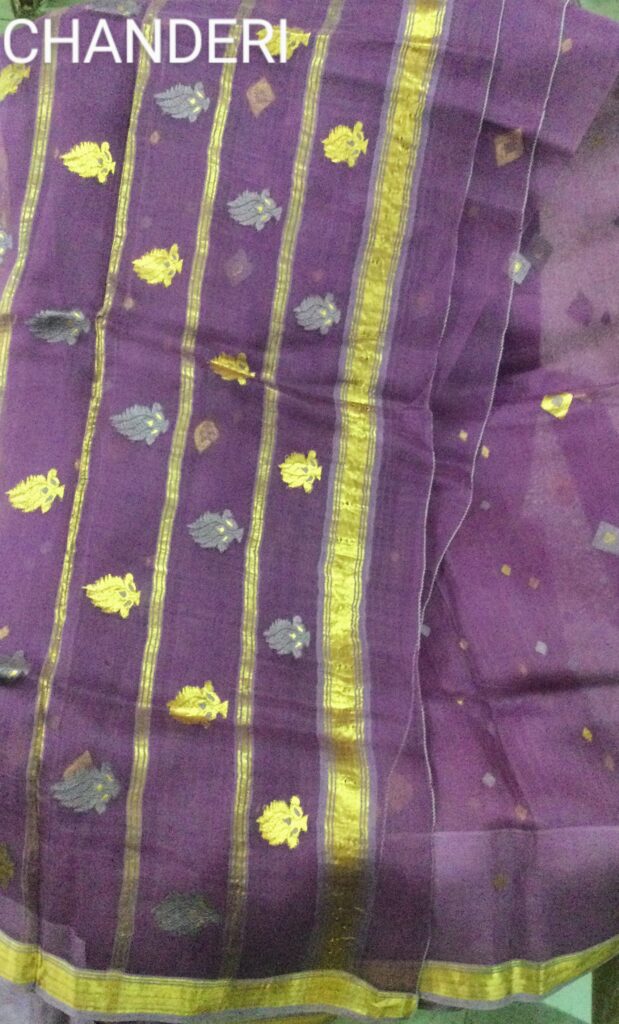
The drape of the royals, Chanderi saree is distinguished by its transparency and glossy finish. Traditionally woven over a white, black or beige base, these sarees are available in a variety of colours today. Chanderi is customarily woven in pure cotton or silk, however, cotton-silk variations are also available now. Floral art, geometric prints, and peacocks are some of the most popular motifs used in these sarees.
Born in the small town of Maheshwar in Madhya Pradesh, the beautiful Maheshwari weave flourished under the patronage of Rani Ahilya Bai Holkar. This silk saree is a visual representation of the grandeur of the forts, palaces, and temples of Madhya Pradesh, as the motifs are inspired from these. Popular designs include the mat pattern, which is also known as ‘chatai’ pattern, along with ‘chameli ka phool’,the ‘eent’ (brick) and the ‘heera’ (diamond) patterns. These elegant sarees are popular because of their light weight and glossy finish, a good choice for the Indian weather Though originally done only in silk, Maheshwari sarees are now available in cotton, silk cotton, and even wool.
Gharchola translates into “home wear”. But the sari is hardly that! They are almost exclusive bridal wear, preferred by Gujarati brides for their vibrant colours and zari work. Typically made in the auspicious colours of green and red, they are distinguished by their special grid pattern. A typical gharchola, is made with 12 squares, called bar baghor or 52 squares, also called bavan bhag. Each check is then tied and dyed to create wonderful bandhani patterns, which repeat themselves through the entire length of the saree.

BENARASI
We have all grown up being in awe of this luxurious weave, but did you know that it even finds a mention in the Mahabharata and Buddhist scriptures! The history of Banarasi silk sarees has seeped into the rich culture of India. Originally crafted exclusively for royalty, each Banarasi saree was crafted from the finest silks and was embellished with real gold and silver threads, taking as long as a year to create one saree. The Banarasi silks of today are a mix of Indian and Mughal influences. Motifs like paisleys, florals, and foliate patterns that are predominant in Banarasi weaves are inspired by Mughal and Persian designs. The pallu of a Banarasi saree is characterized by its compact design, floral motifs, vertical jhallars, and gold and silver thread work (the real gold and silver thread work has now been replaced by copper wires with silver and gold polish). It takes at least three artisans to make one Banarasi saree.
Intricate intertwining floral motifs, kalga , and bel, a string of upright leaves called jhallar at the edge of the border is a characteristic of these saris. Goldwork, figures, metallic visual effects, jal (a net-like pattern), and mina work are other characteristics. Banarasi saris are worn by Indian women during weddings complemented with the best jewelry.
One of the most delicate weaves, Tanchoi is a subtly elegant fabric. It is a weaving technique that involves a single or double warp along with two to five colours placed in the weft that are often of the same shade. The special feature of Tanchoi sarees is that the fabric texture has a satin finish. Famed for the intricate and small weaving patterns over the fabric, the commonly used motifs are flowers, small birds, peacocks, and parrots.
One of the staples of the city of Varanasi, the Amru brocade uses silk threads, as opposed to gold and silver zari. Because of the characteristic butis that are made on these sarees, it is also known as butidar sarees. Originally produced as a cheaper alternative to the more expensive khinkhwab, the amru brocade today is an established industry of its own.
One of the richest forms of textiles, Jamavar is traditionally a form of Persian embroidery from Kashmir that was used to make warm shawls. It is very different from the Banarasi weave with no loose threads at the back, giving it a more complete finish. Intricate paisley, mango, and floral motifs, typical of Persian work are the distinct characteristics of these sarees.
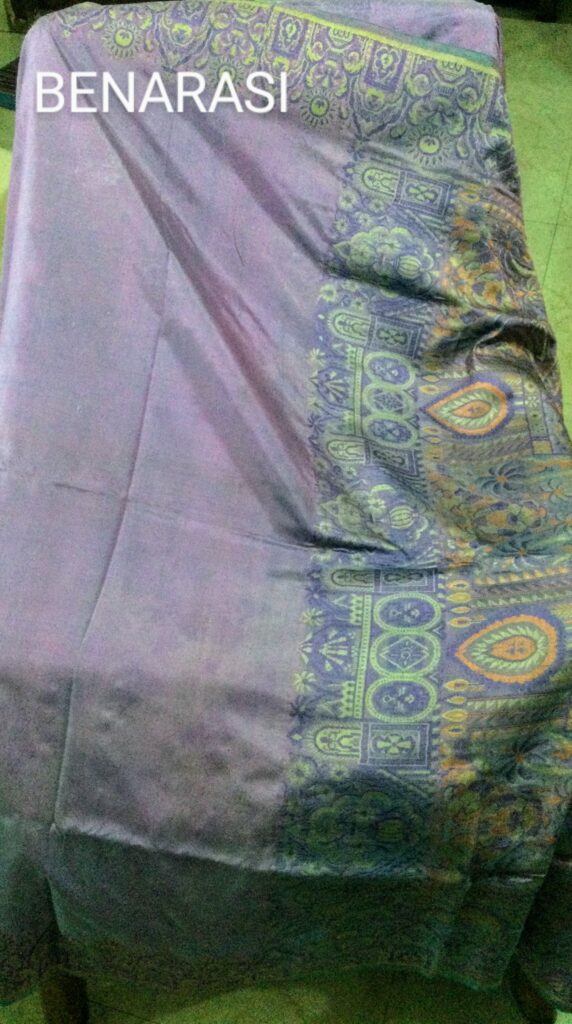
Pashmina Banarasi has won every women’s heart with its range of colors, golden buti work in the body, and beautifully designed border. Authentic silk weaves and metallic artwork have added an elegant texture to these bridal sarees.
When it comes to storing our precious banarasi sarees, extra caution is required. They are extremely delicate, hence we fold with the front weaving part inward and wrap each separately in cotton or muslin cloth while storing. Do not use metal hangers for the sarees, as they corrode, and leave permanent stains
Hand washing is not an option so dry cleaning is the best way to ensure that your saree is clean and maintained
Avoid spraying perfume on the saree; it may stain it. If stained treat only the affected spot. Do not dry the saree in direct sunlight. This will make the cloth weaken and fade.
Traditional yet timeless Banarasi Sarees are always loved by all. Wear one to feel royal, and gorgeous. There are more cotton weaves, innumerable embroidery, and paintings that make up our fabric heritage. But that is for some other time!
A sari lover, A sari wearer

Author’s bio:
Prabha Raghunandan ,a motivational speaker, enjoys writing poems, and stories, also kept a diary of her travels to known and unknown places as the NationalPresident of Inner Wheel India.
Her enthusiastic account, with eye for detail enriches her travel stories. She can be reached at prabha325@gmail.com

